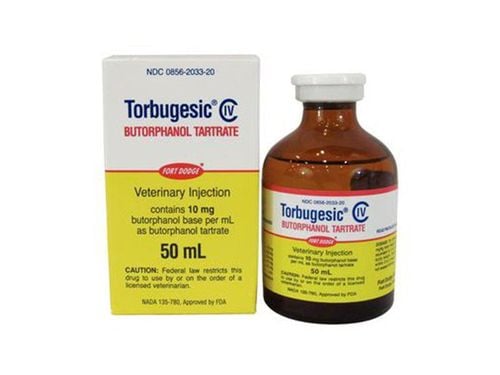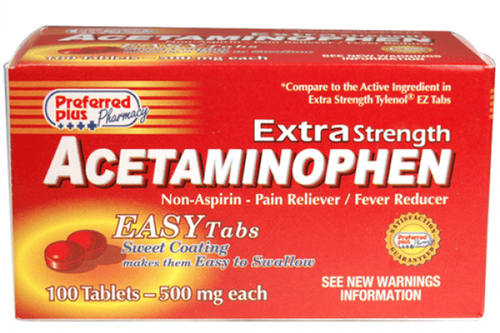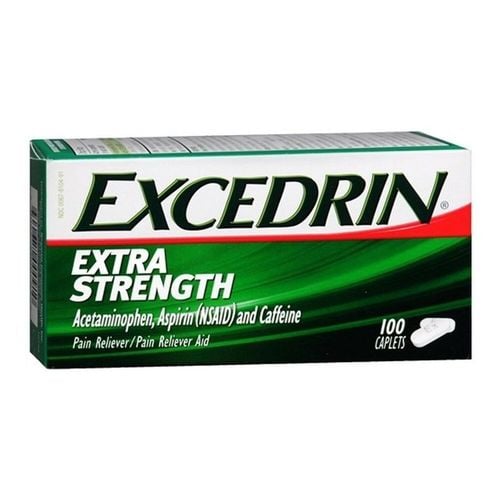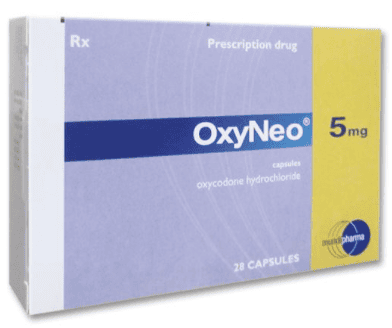This is an automatically translated article.
Nefopam hydrochloride, also known as Nefopam, is a pain reliever and fever reducer but has no effect on the central nervous system.
1. Uses of Nefopam
Nefopam belongs to the group of pain relievers and fever reducers, with the main active ingredient being Nefopam hydrochloride. This active ingredient has a strong and fast-acting analgesic effect.Nefopam belongs to another group of analgesics and antipyretics because it has no analgesic effect on the central nervous system such as Codeine, Morphine, Pentazocine and Propoxyphene. Nefopam also has no respiratory depression.
Nefopam is prepared in many different forms and strengths such as 30mg tablets, 30mg hard capsules and 20mg/2ml injection solution. Oral nefopam is used for the relief of mild to moderate acute and chronic pain including: toothache, headache, menstrual pain, myalgia, muscle spasm, cancer pain or post-traumatic and postoperative pain. Nefopam injection is only used to treat acute pain.
2. Dosage and how to use Nefopam
How to take Nefopam as follows:
Oral: Take the drug with or without meals. Parenteral route: Mix Nefopam with commonly used infusion solutions such as sodium chloride or isotonic glucose. Do not mix Nefopam with other injectable drugs in the same syringe. Dosage of Nefopam in adults is as follows:
Oral: 30 - 90mg/time, 3 times/day. The recommended starting dose is 60mg/time and administered 3 times/day. Parenteral route: 20 mg deep intramuscularly every 6 hours if needed, up to a maximum of 120 mg/day. Slow intravenous infusion of 20 mg/time every 4 hours if needed, up to a maximum of 120 mg/day. After the injection, the patient needs to lie down for 15-20 minutes to monitor and avoid some side effects such as dizziness, nausea, sweating. Elderly: Reduce dose of Nefopam due to slow metabolism, recommended starting dose is 30mg/time, 3 times/day. Patients with end-stage renal failure: Reduce dose due to possible increase in peak serum concentration. An overdose of Nefopam can cause increased circulation, tachycardia, agitation, hallucinations, convulsions, and coma. The patient should then receive the usual supportive measures and remove the drug rapidly by induction of vomiting or gastric lavage. Activated charcoal may decrease the absorption of the drug. Attention should be paid to controlling the patient's hallucinations, convulsions, and cardiovascular symptoms.
3. Side effects of the drug Nefopam Nefopam drug can cause some unwanted side effects with the following frequency:
Common: Dry mouth, nausea, vomiting, dizziness, drowsiness, palpitations, tachycardia, sweating, urinary retention. Rare: Irritability, hypersensitivity reactions, excitability, hallucinations, restlessness, symptoms of drug dependence or abuse. 4. Some notes when taking Nefopam drug Nefopam should not be used in people with hypersensitivity to its ingredients, people with a history of seizure disorders, oral drugs in children under 12 years of age, and injection drugs in children under 15 years of age. , the elderly, with urinary-prostatic disorders and at risk of urinary retention, those at risk of angle-closure glaucoma, those with myocardial infarction, are taking monoamine oxidase inhibitors and are at risk of drug dependence. Nefopam, who are taking other medicines containing Nefopam. Patients are at risk of developing withdrawal syndrome when they stop treatment with nefopam and have been treated with morphine. Regularly assess the risks and benefits of treatment with nefopam to balance. People with liver failure, kidney failure, cardiovascular disease need to be careful when using Nefopam because the drug accelerates the heart rate. In particular, do not use drugs to treat myocardial infarction when there is no treatment experience. Women who are pregnant or breast-feeding should not take Nefopam because research on its efficacy and safety in this population is limited. Avoid driving or operating machinery while taking Nefopam because it can cause dizziness and drowsiness. Nefopam drug interactions with drugs: Increased effects on the central nervous system when taken with alcohol; do not take with Monoamine oxidase inhibitors; increased undesirable effects when used concurrently with anti-muscarin or sympathomimetic drugs; increased risk of seizures when used with tricyclic antidepressants; Increased CNS depressant effect when used with sedative drugs. To make sure Nefopam does not affect other medications you are taking or are taking, you should tell your doctor about all the medications you are taking, including prescription and over-the-counter medicines, herbs, and supplements. . The use of Nefopam is to relieve the pain of some mild to moderate acute and chronic pain of toothache, headache, menstrual pain, muscle pain,...
Please dial HOTLINE for more information or register for an appointment HERE. Download MyVinmec app to make appointments faster and to manage your bookings easily.













